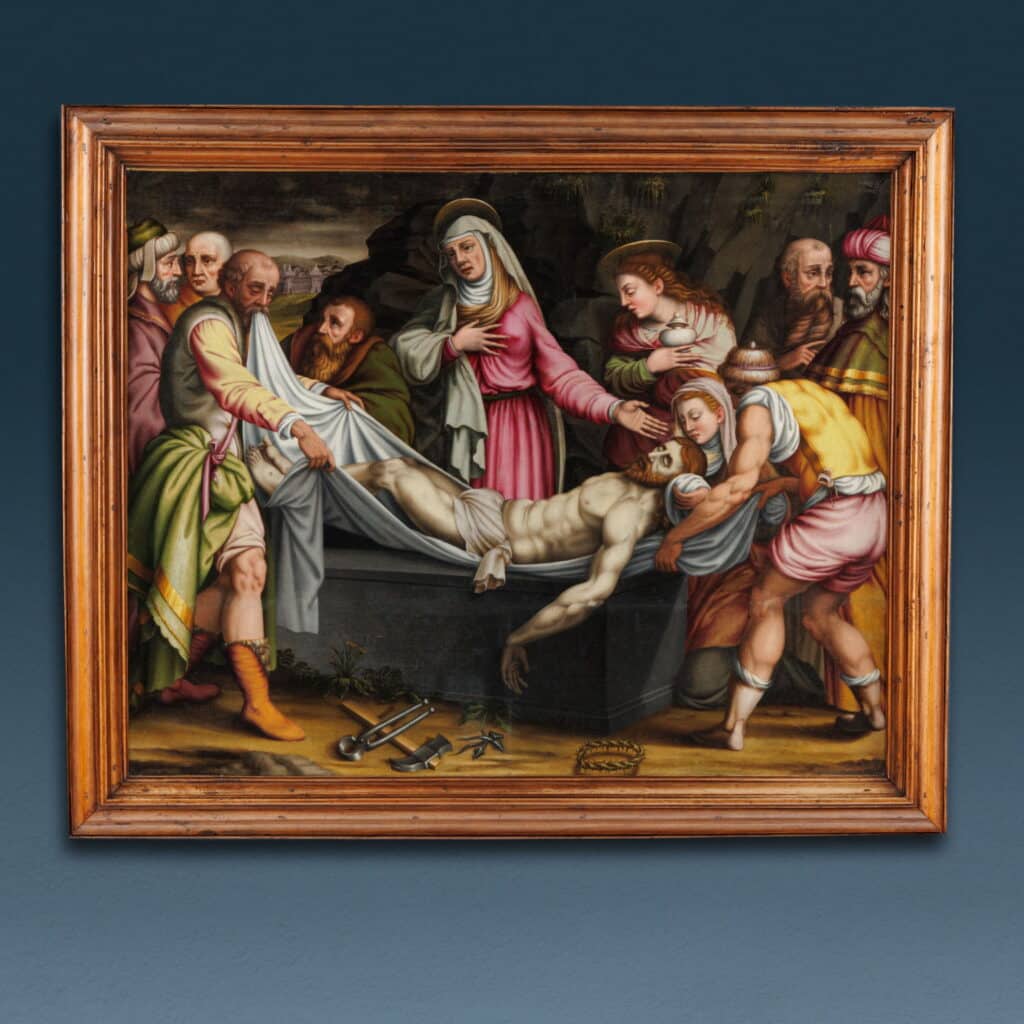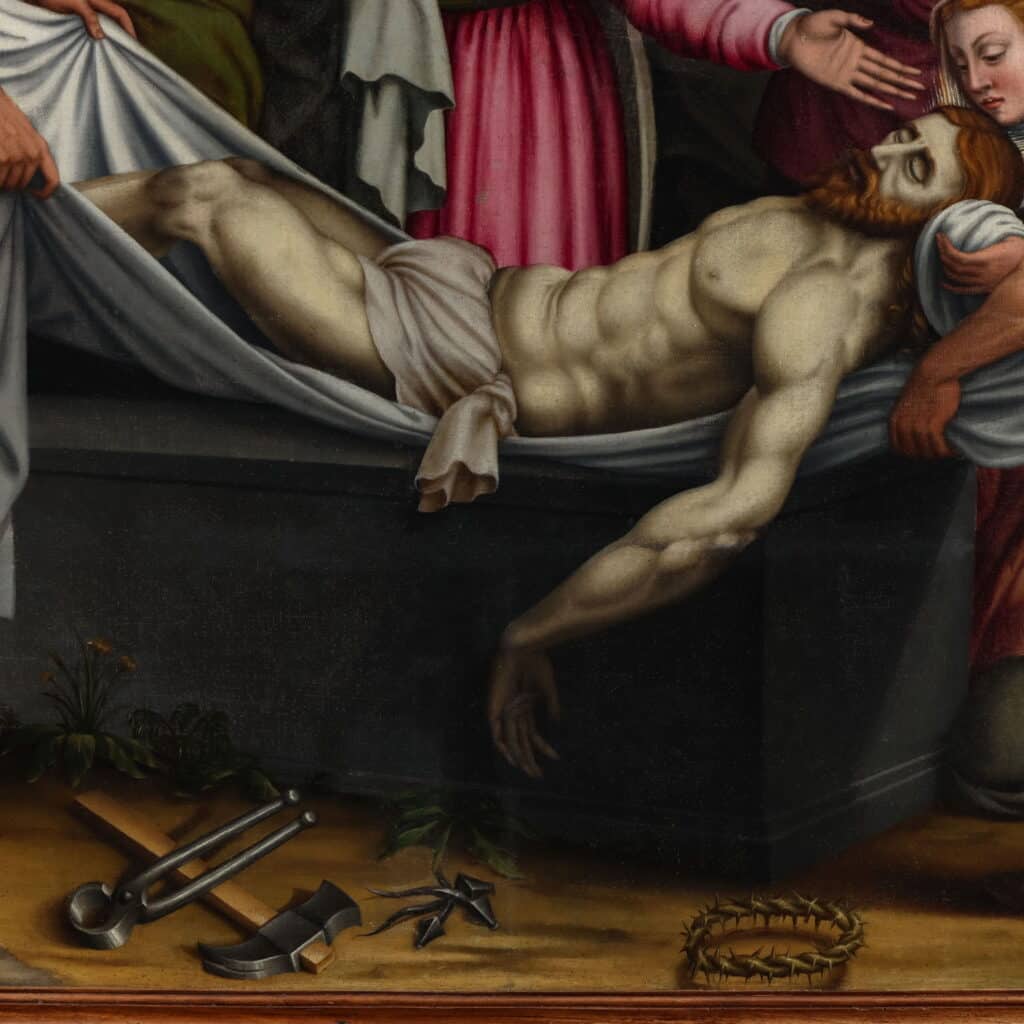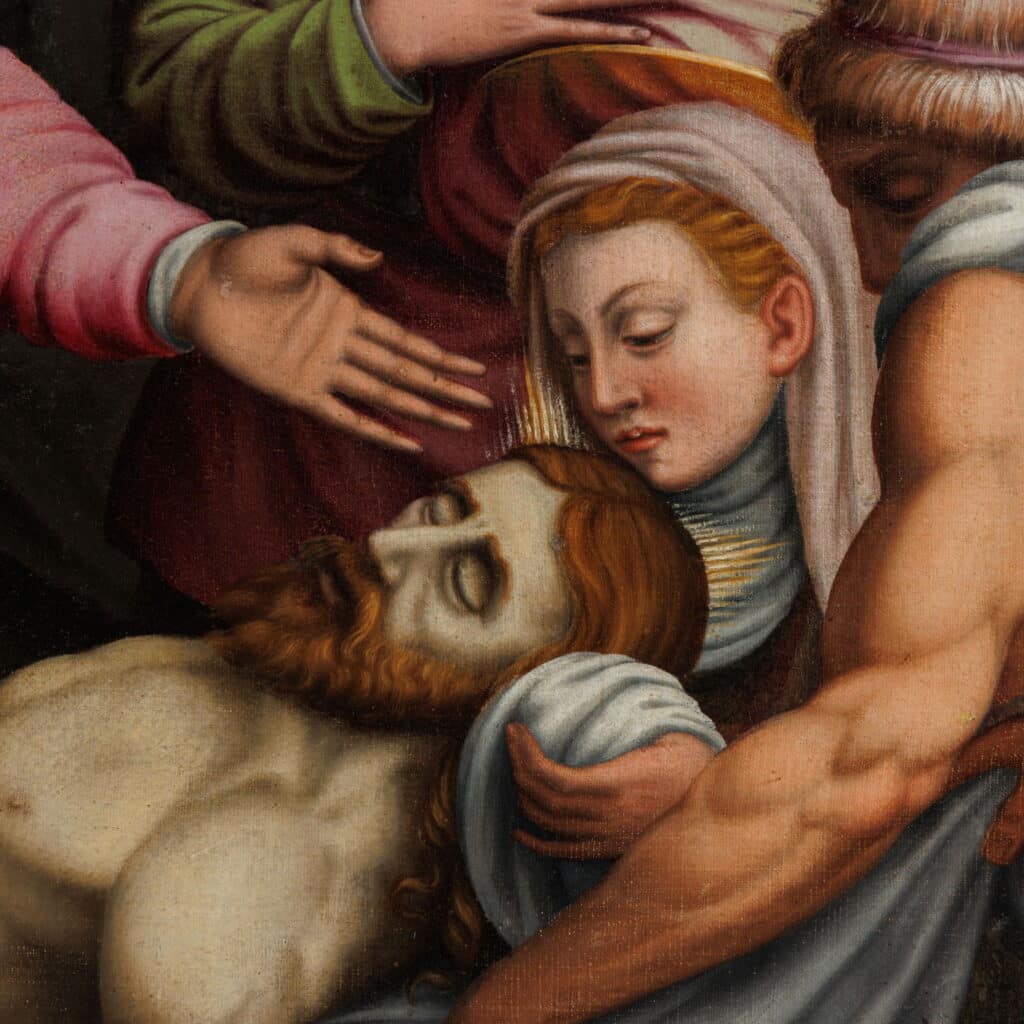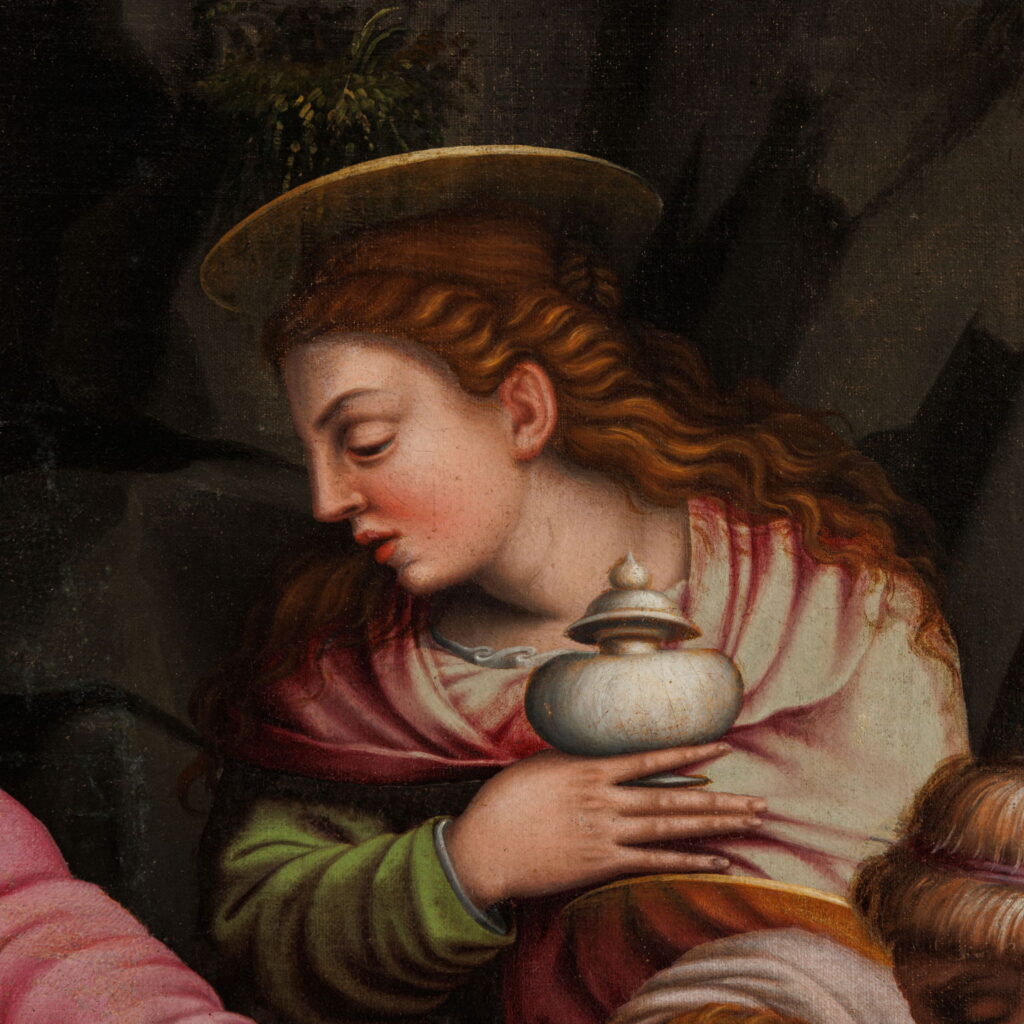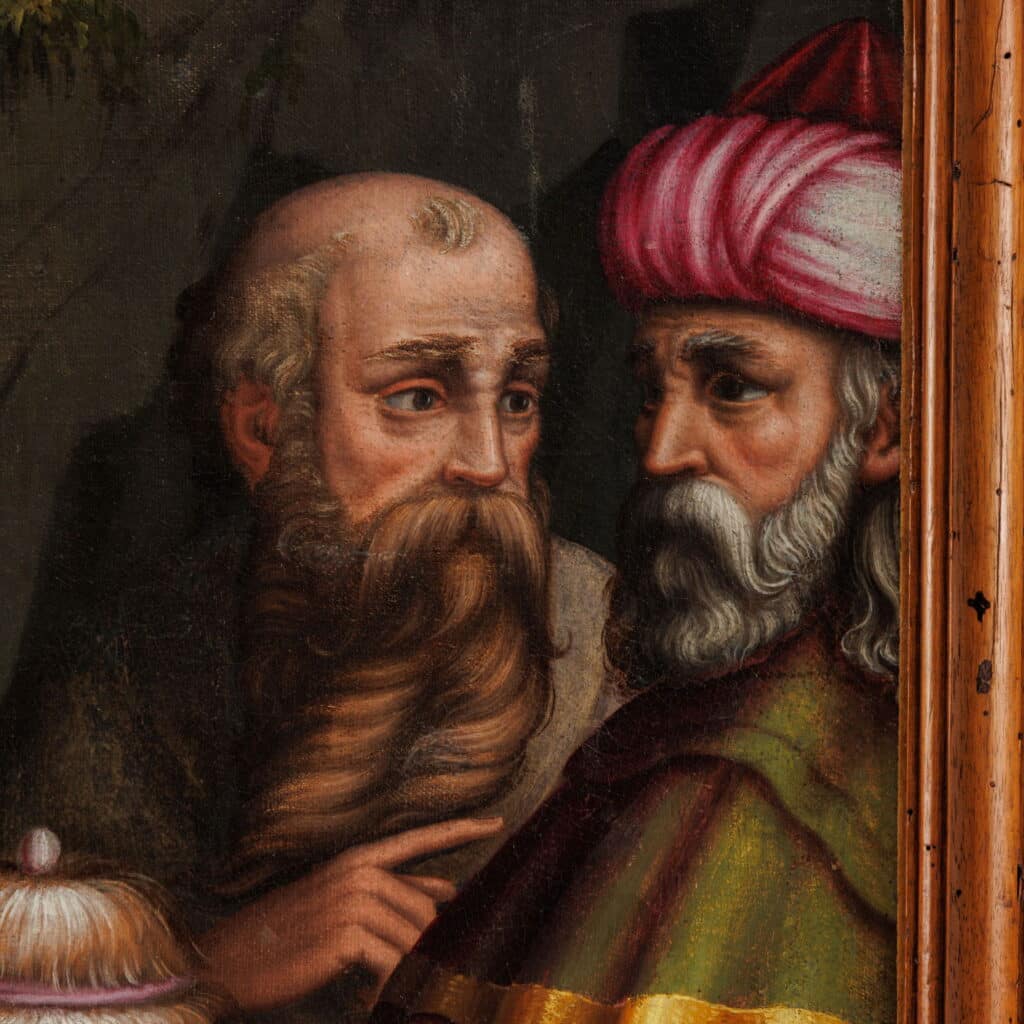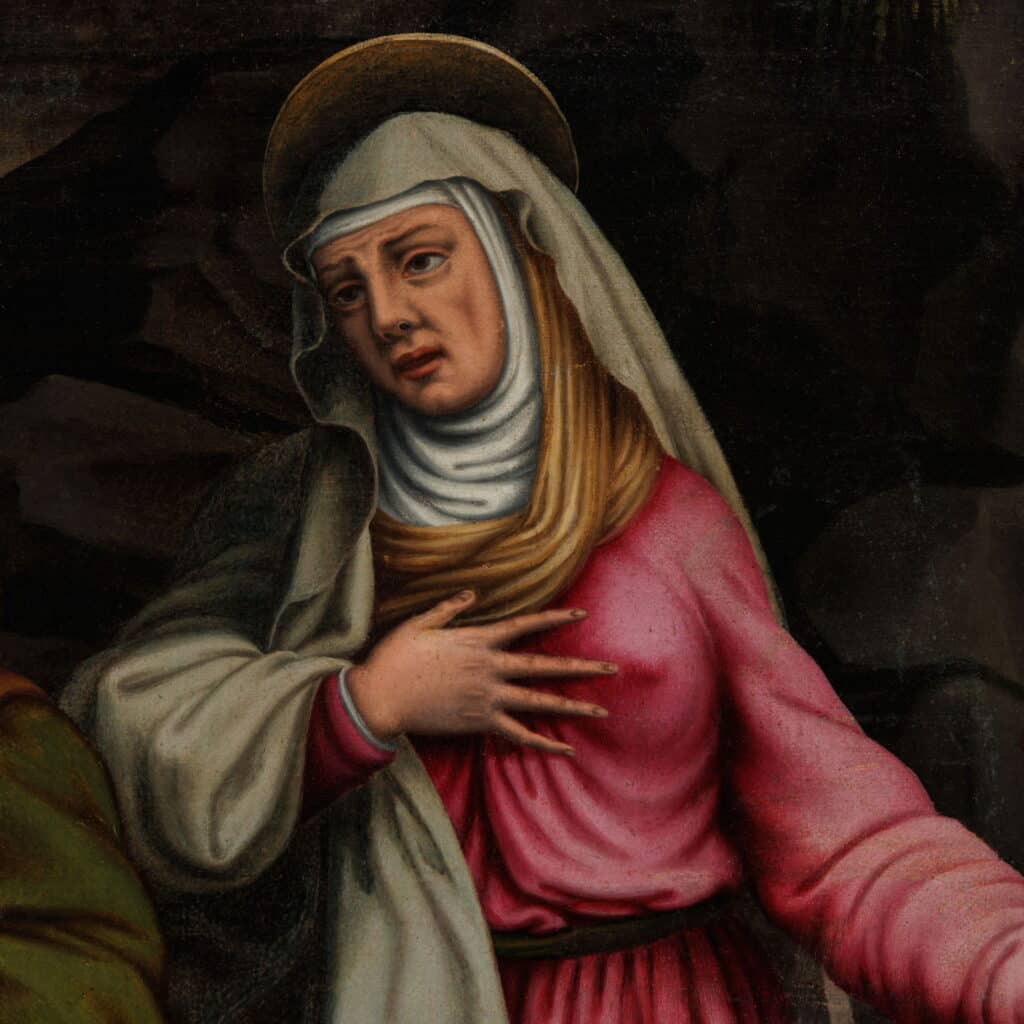Description:
The large scene recounts the Deposition of Christ from the Cross, condensing two moments of the narration: the Lamentation of the Madonna over the body of Christ and the deposition of the body in the tomb.
The strongly symmetrical composition is centered on the horizontal figure of the dead Christ, about to be lowered into the sepulcher with a sheet held by two robust men; in the centre, standing behind the sepulchre, is the Madonna, flanked on the right by the Magdalene with a jar of ointment, while various male figures are arranged around her, some of whom are engaged in intense conversations and dressed in “modern” sixteenth-century clothes, already from Renaissance painting they were inserted to allude to the client.
Below, in the foreground, the instruments of the Passion, the crown of thorns, the nails, the hammer and the pincers to extract the nails, all rendered with rigorous precision in executive detail, including color. In the left background, behind a rock, the city of Jerusalem can be glimpsed.
The emaciated and pale figure of Jesus stands out in the midst of the acid, dissonant colors of the other figures, which stand out for their turgid and anatomically perfect anatomies almost to the point of artificiality, or rather mannerism.
Dimensions: 106 x 130 cm (with frame 134 x 160 cm)
CODE: ARARPI0197806
Historical-critical analysis:
The painting is accompanied by the expertise of Dr. Giuseppe Sava, who attributes it to Lombard late-mannerist painting, close in particular to the production area of the painter Giuseppe Meda (1534 – 1599).
In particular, Sava underlines the correspondence, albeit specular, of the painting with an engraving of 1550-1561 by Battista Franco (1510 -1561), an artist of central Italian training, from which the painter takes the model of the scene, respecting the number and arrangement of the characters , but introducing different variations, in the execution of the characters and the setting, which rather refer to the painting of the Milanese and Lombard reality of the seventh decade of the sixteenth century.
Sava offers an interesting comparison with the pictorial production of Giuseppe Meda, a Milanese artist who worked intensely in the cathedral of Monza, in particular collaborating with Giuseppe Arcimboldo on the creation of the fresco entitled The Tree of Jesse in the right transept, and creating by himself part of the Stories of John the Baptist and characters from the Old Testament in the left transept.
In these works by Meda we find various references to the models of central Italian Mannerism, whose influence is also felt through the chalcographic sources, and in particular we find some elements such as the poses of the characters and the lines of the clothes, which are very close to those of the Deposition presented here, allowing Sava to hypothesize for this work a provenance from the Milan area very close to Meda’s most ancient production.
- Deposition of Christ in the tomb. Lombard painter (Giuseppe Meda?) 1560-1570 ca.

Antiques, Art and Design
FineArt is the new ambitious Di Mano in Mano project that offers an exclusive choice of antiques and design works, presenting them for their singularity and uniqueness.

